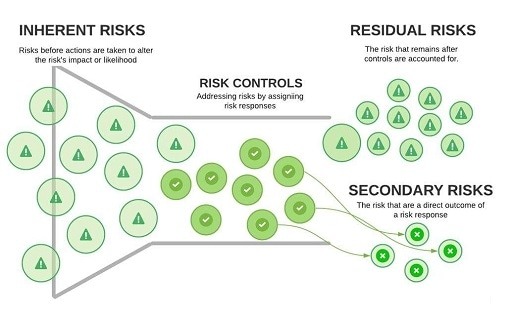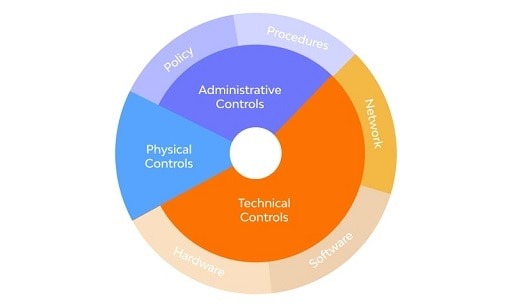Ships are complex mechanical beasts that consist of many pieces, all of which collaborate to ensure a safe and successful journey. The software would be the analogous concept in the digital world. Shipbuilding, much like software development, is a multi-step process that requires accurate engineering.
After that, after everything is finished, the builders put their creations through a series of tests in a variety of environments to confirm that the vessel is safe to use and operates as intended.
Tests are run on just about all of today’s greatest software to make sure that it is also secure, and this is standard practice.
Fault injection is one type of test that can be performed. If we compare fault injection to shipbuilding, it would be analogous to naval architects and engineers purposefully drilling holes in their vessels to test how well they can withstand capsize.

What are Fault Injection Attacks?
The process of purposefully generating faults in a system is referred to as “fault injection.” The purpose of this procedure is to conduct an evaluation of how well the system operates when it is under attack.
In the course of their work, hardware and software developers frequently introduce errors in their products for a variety of reasons.
One of their primary goals is to identify and solve any problems that might occur when the production lab’s strictly monitored conditions are removed from the equation. This is significant since they do not have any influence over the circumstances in which their items will be used by their customers.
A server failure might force an entire region to lose access to its preferred streaming service. Attackers could produce a fault that destroys security features. Heat could compromise components or materials keeping components together.
When something like this occurs, software developers and device makers must ensure their devices continue to secure the data and safety of users while also adjusting load distribution so that there is as little disruption to services as possible.
In the end, fault injection is required to ensure the safety, security, and dependability of both software and hardware. In similar terms, fault injection assists manufacturers in protecting their intellectual property, lowering the danger of loss, and maintaining the faith of their customers.
You wouldn’t put your money in a bank if their app frequently crashed and hackers had an easy time breaking into it, would you?
How does Fault Injection Attack works?
Fault injection is a process that is used on purpose by manufacturers to identify potential vulnerabilities in their wares that could be exploited by malicious actors.
There is no barrier that prevents attackers from using the same method to find vulnerabilities in a system and exploit them. After all, the methods for doing fault injection are not unduly complicated, and the tools that are needed to perform fault injection are public.
In addition, seasoned adversaries can get inventive with their ways and test the limits of the system beyond what is considered typical. At this juncture, it is essential for you to be aware that fault injection can either be physical (in hardware) or digital (in software).
In a similar vein, the tools and procedures that are used in fault injection attacks can either be manual or automated. Both manufacturers and hackers frequently use a combination of digital and physical instruments in the testing and attacks that they conduct, respectively.
FERRARI, which stands for “Fault and ERRor Automatic Real-time Injector,” FTAPE, which stands for “Fault Tolerance And Performance Evaluator,” Xception, Gremlin, Holodeck, and ExhaustiF are all examples of tools that can be used for fault injection.
FIA methods, on the other hand, frequently involve subjecting the system to a barrage of powerful electromagnetic pulses, increasing the temperature of the surrounding environment, under-volting GPUs or CPUs, or initiating a short circuit.
They can corrupt a system for a sufficient amount of time to either exploit a reset, bypass a protocol, or steal sensitive data by using FIA tools and methods.
How to Defend Against Fault Injection Attacks
If you’re just an ordinary consumer, you don’t need to worry about taking any special precautions to protect yourself from FIA attacks.
In the same way that the sailing crew is responsible for the ship’s safety, the manufacturer of the device or the developer of the software bears this responsibility. To do this, manufacturers and developers must first design more durable security protocols and then make it difficult for hackers to steal data from systems.
Nevertheless, there is no such thing as a flawless system. Attackers are constantly developing new techniques of attack, and because they don’t follow the rules, they are not restricted in any way in how they apply those strategies to their attacks.
A hacker might combine FIA with a side-channel assault, for instance, particularly if they have restricted access to the device they are targeting. This fact needs to be taken into consideration by the opposing team when they are constructing fault-tolerant systems and organizing their fault injection testing.
Should you have concerns regarding Fault Injection Attacks (FIA)
Not in any direct way. Fault injection attacks aren’t the most frequent type of cybersecurity threat, yet there are others that could affect you more intimately.
In addition, FIA is rarely conducted covertly. To carry out a fault injection attack, an adversary will require direct access to the device you are protecting. In addition, fault injection techniques are typically invasive and end up causing some level of damage to the system, either temporarily or permanently.
As a result, you will likely discover that something is wrong or that you will be left with a device that you are unable to use.
The problem, of course, is that by the time you detect that something has been tampered with, the attacker may already have stolen sensitive data. It is up to the developer or manufacturer to improve the overall security of their products and to stop the attack from happening in the first place.
Would you like to read more about Fault Injection Attacks-related articles? If so, we invite you to take a look at our other tech topics before you leave!










